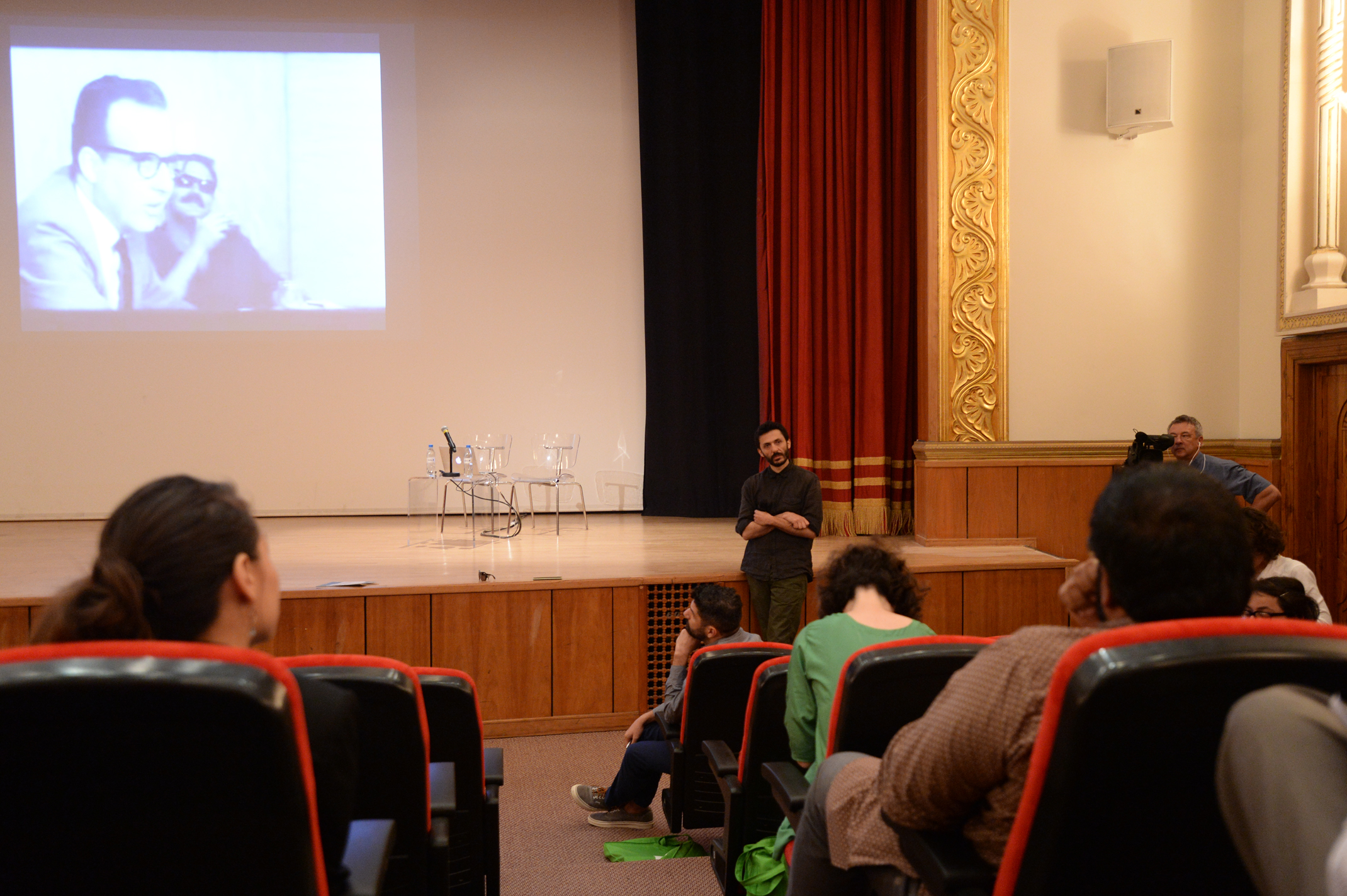Discussion
Rene Gabri,discussion of memories of our underdevelopment, a symposium at March Meeting 2015

search


—
Rene Gabri,discussion of memories of our underdevelopment, a symposium at March Meeting 2015

memories of our underdevelopment, a symposium takes form like an arabesque—interwoven motifs, which together form a composition. The three motifs are: the arabesque itself (in the shadows of Said's Orientalism); the binary of development/ underdevelopment and the past, the present, the potential. Throughout the day, these motifs will emerge from questions formulated by invited contributors, including: Shaina Anand, Youssef Belal, Özge Çelikaslan, Nitasha Dhillon, Laura Diamond Dixit, Miku Dixit, Amin Husain, Aras Özgün, Ashok Sukumaran, Rolando Vázquez Melken and Goksun Yazici.
Movement I
Movement II
Movement III
Arabesque is a placeholder for thinking about a new political imagination that could emerge from the historical regions, in which this aesthetic form had once taken shape. It is a way of creating a dialectical counterpart to Edward Said's concept of Orientalism, and thus it could encompass everything that would oppose the tropes, borders, practices, dispossessions, violences, which the orientalist world-view projected onto a region, and the realities that projection produced and continues to produce to this day.
For some time, in the wake of the events of 2011, it seemed that we had truly entered this epoch. A movement of squares, rooted in a horizon of collective social justice began to emerge. New forms of political action inspired by developments in Tunis and Cairo were being awakened, inspiring movements in Europe, North America, Asia and Latin America. Those movements broke open the timespace for new political imaginaries and solidarities, which had been thought dead since the 1960s. A contagious form took hold, based on a refusal of a life of indignities and complicities, subsumed and consumed by both an evermore abstract globalised capital whose fluctuations determine fates of entire peoples living under the most disparate of conditions; and increasingly localised forms, which the dispossession and violence assumed, fueled not only by contemporary circumstances, but also by the historical forces that remain unsettled beneath them.
The refusal of disenfranchised and sometimes revolutionary youth, students, labourers, hackers, migrants, unemployed, precarious, artists, thinkers was met by the existing forces of rule and governance with cynicism and increasing levels of violence. And today these movements have been instrumentalised nearly everywhere to once again reiterate that resistance is futile and can only lead to even more repressive measures, laws, forms of capture and control. One would say today, more than ever, art and cultural spaces become a refuge to seek the capacities for countering these reactionary forces and retaining fidelity to new political imaginaries and potentialities. At the same time, artists and art institutions often remain beholden to the very structures that these movements have attempted to put into question. And sometimes the seemingly unstoppable progression of cultural events and the seemingly unchangeable forms they take can appear as reactionary as any regime, and as oblivious as any mainstream media to the emergence of new realities and possibilities.